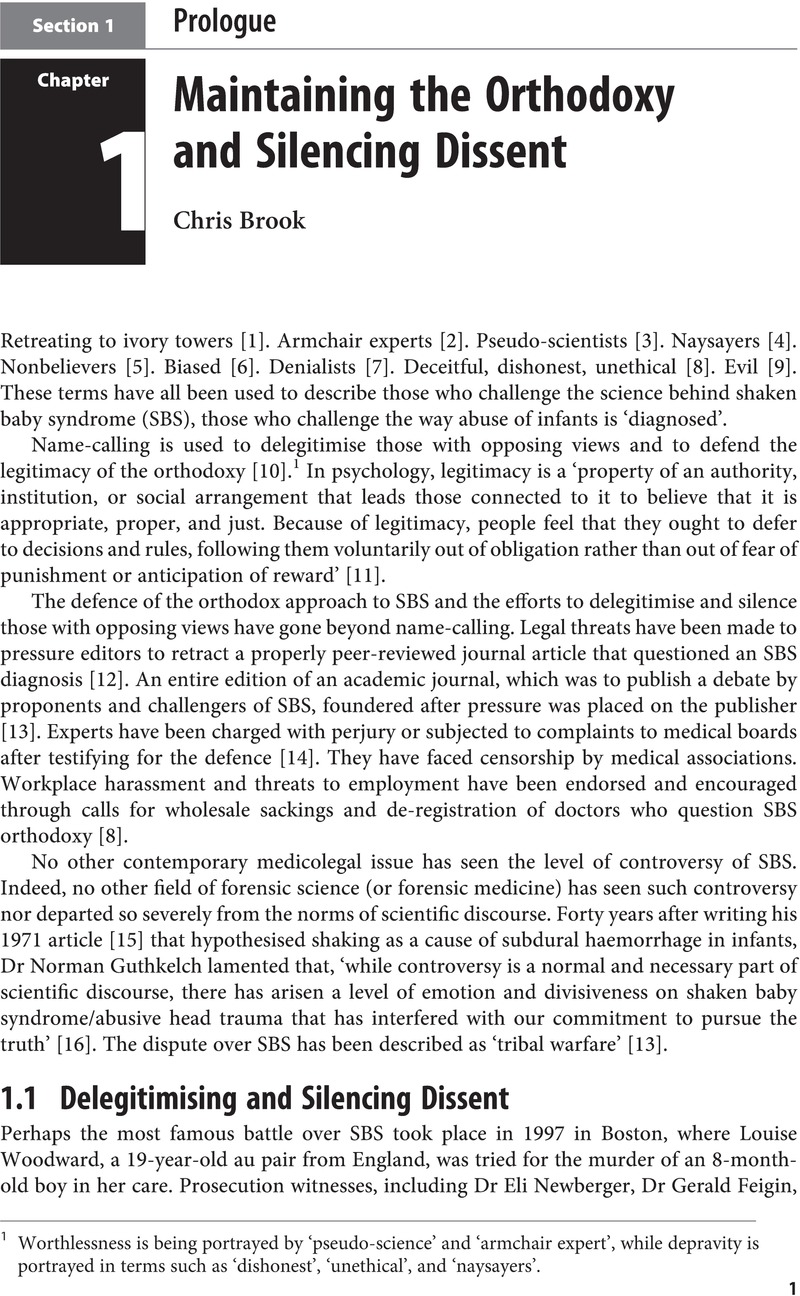Book contents
- Shaken Baby Syndrome
- Shaken Baby Syndrome
- Copyright page
- Dedication
- Contents
- Foreword
- About This Book
- Abbreviations
- Section 1 Prologue
- Section 2 Medicine
- Section 3 Science
- Section 4 Law
- Section 5 International
- Section 6 Postface
- Appendix: Frequently Repeated Claims concerning Shaken Baby Syndrome
- Index
- Plate Section (PDF Only)
- References
Section 1 - Prologue
Published online by Cambridge University Press: 07 June 2023
- Shaken Baby Syndrome
- Shaken Baby Syndrome
- Copyright page
- Dedication
- Contents
- Foreword
- About This Book
- Abbreviations
- Section 1 Prologue
- Section 2 Medicine
- Section 3 Science
- Section 4 Law
- Section 5 International
- Section 6 Postface
- Appendix: Frequently Repeated Claims concerning Shaken Baby Syndrome
- Index
- Plate Section (PDF Only)
- References
Summary

- Type
- Chapter
- Information
- Shaken Baby SyndromeInvestigating the Abusive Head Trauma Controversy, pp. 1 - 32Publisher: Cambridge University PressPrint publication year: 2023



